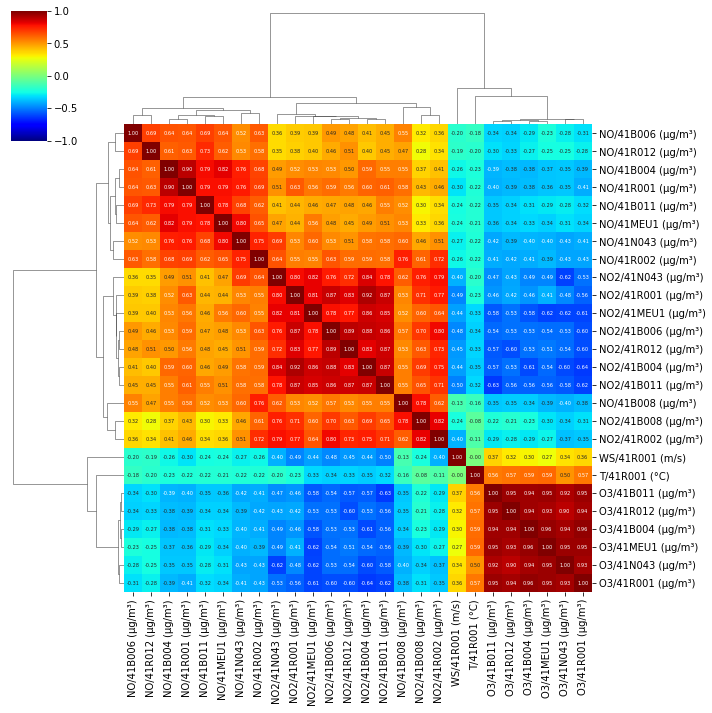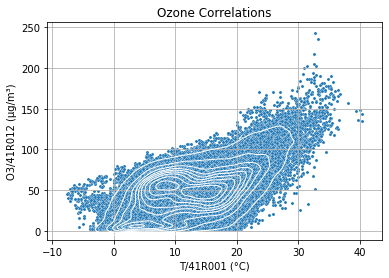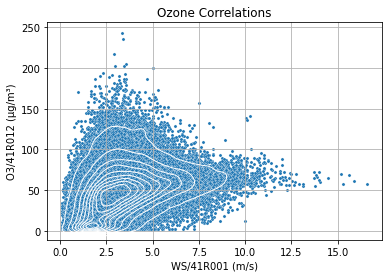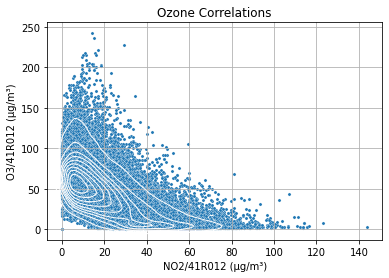In this post we review some well known properties of tropospheric Ozone. Exercise is performed on 10 years of observations through specific correlations between Ozone, Nitrogen Dioxide and meteorological parameters. Objective is to draw a knowledge baseline about the Ozone.
Dataset
Dataset is a selection of Brussel’s Air Quality Time Series, including:
- Ozone concentrations monitored over the region;
- Relevant meteorological data (temperature, wind speed);
- Nitrogen Dioxides related to the target site as they share an chemical equilibrium with Ozone.
Selection is made over 2012-2022 (10 civil years) to average out meteorological variations.
Sources: IRCEL SOS API
Correlations
Following figure shows the clustered Pearson Correlation between each time series:

It’s interesting to see that clustering almost natively sort substances by kind and traffic intensity.
From this correlation table we can comfort our knowledge:
- Ozone series are strongly positively correlated as the main source of this substance in troposphere is sun activity (due to UV absorption production path);
- Ozone series are mildly positively correlated with air temperature for the same reason;
- In a smaller extent Ozone Time Series is mildly correlated with wind speed as it improve vertical mixing, feeding lower layer of troposphere with Ozone produced in above layers;
- Wind speed and Air Temperature does not correlated very well as both phenomena are not lineally related;
- Ozone series are positively correlated with Nitrogen Dioxides as they share a thermodynamic equilibrium.
Photochemistry
Going deeper for some correlations, Ozone is mainly produced naturally within the first 50 km of troposphere by photo-chemistry (UV photolysis of Oxygen driven by the sunlight).
(1) ![]()

At temperatures above 15°C, tropospheric Ozone positively correlates with temperature because both air temperature and ozone photo-chemistry are influenced by the sun intensity.
We also see that Ozone is a substance which concentrations can be quasi null. This happens by night when sun activity is off and/or when destructive sources are presents (eg.: Nitrogen Monoxide).
This figure recall us than Ozone peaks generally happens in summer when sun intensity is higher.
Vertical mixing
Ozone concentrations also stabilize between 50 and 100 µg/m³ when wind speed increases.

This is due to a better vertical mixing of troposphere layers allowing higher concentrations from above layers to mix with ground layer.
Photo Oxidants
Ozone concentrations negatively correlates with Nitrogen Dioxide because it shares a thermodynamic equilibrium with it.
(2) ![]()

This figure remind us than Ozone and Nitrogen Dioxide issues must be thought together as Nitrogen Dioxide is a potential secondary source of Ozone in addition of primary production due to sun activity.
